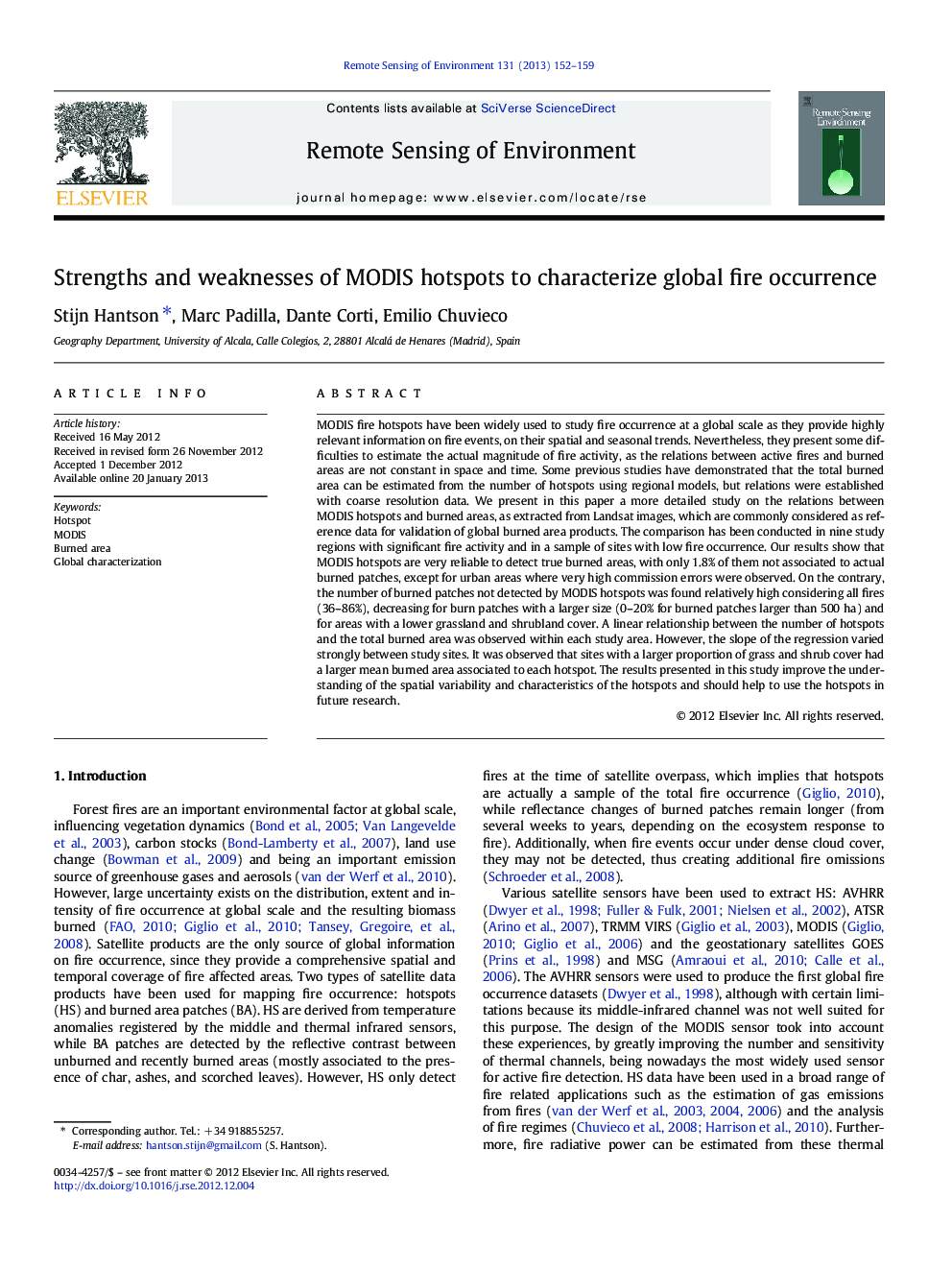| کد مقاله | کد نشریه | سال انتشار | مقاله انگلیسی | نسخه تمام متن |
|---|---|---|---|---|
| 6347229 | 1621269 | 2013 | 8 صفحه PDF | دانلود رایگان |

MODIS fire hotspots have been widely used to study fire occurrence at a global scale as they provide highly relevant information on fire events, on their spatial and seasonal trends. Nevertheless, they present some difficulties to estimate the actual magnitude of fire activity, as the relations between active fires and burned areas are not constant in space and time. Some previous studies have demonstrated that the total burned area can be estimated from the number of hotspots using regional models, but relations were established with coarse resolution data. We present in this paper a more detailed study on the relations between MODIS hotspots and burned areas, as extracted from Landsat images, which are commonly considered as reference data for validation of global burned area products. The comparison has been conducted in nine study regions with significant fire activity and in a sample of sites with low fire occurrence. Our results show that MODIS hotspots are very reliable to detect true burned areas, with only 1.8% of them not associated to actual burned patches, except for urban areas where very high commission errors were observed. On the contrary, the number of burned patches not detected by MODIS hotspots was found relatively high considering all fires (36-86%), decreasing for burn patches with a larger size (0-20% for burned patches larger than 500Â ha) and for areas with a lower grassland and shrubland cover. A linear relationship between the number of hotspots and the total burned area was observed within each study area. However, the slope of the regression varied strongly between study sites. It was observed that sites with a larger proportion of grass and shrub cover had a larger mean burned area associated to each hotspot. The results presented in this study improve the understanding of the spatial variability and characteristics of the hotspots and should help to use the hotspots in future research.
⺠We compared MODIS hotspots with high resolution burned area data. ⺠MODIS hotspots showed low commission errors and high omission errors. ⺠The relation between burned area and number of hotspots is very variable. ⺠The differences in errors and trends are related to the land cover and fire size.
Journal: Remote Sensing of Environment - Volume 131, 15 April 2013, Pages 152-159